Every successful home theater starts with two essentials: the biggest and sharpest screen possible, and high-quality surround sound capable of correctly reproducing the multi-channel soundtracks of today’s films and entertainment content. For anybody searching for a vivid and interesting listening experience as well as home entertainment, surround sound is now the industry standard.
The primary concept behind 5.1 and 5.2 surround sound systems is that they provide more listening possibilities in different ways. In this article, we’ll go over 5.1 vs. 5.2 surround sound in detail, as well as the similarities and differences between the two.

5.1 Surround Sound
For speakers that deliver real surround-sound effects, 5.1 surround-sound technology are regarded the bare minimum. It is regarded as an industry standard and is supported by all DVDs, video games, and a wide range of other media. 5.1 surround sound is commonly regarded as the greatest way to enjoy home movies and music.
The first number represents the number of channels, while the second number represents the number of subwoofers. The 5.1 surround sound system has five channels: front that is left and right, center speaker, two surround side speakers and a subwoofer. This is what we now refer to as 5.1 surround sound.
The first figure, 5, denotes the system’s total sum of speakers. The count of subwoofers is represented by the second digit, 1. A 5.1 system has 5 speaker channels and one extra channel for low frequency effects. A subwoofer channel is another name for the low frequency effects channel.
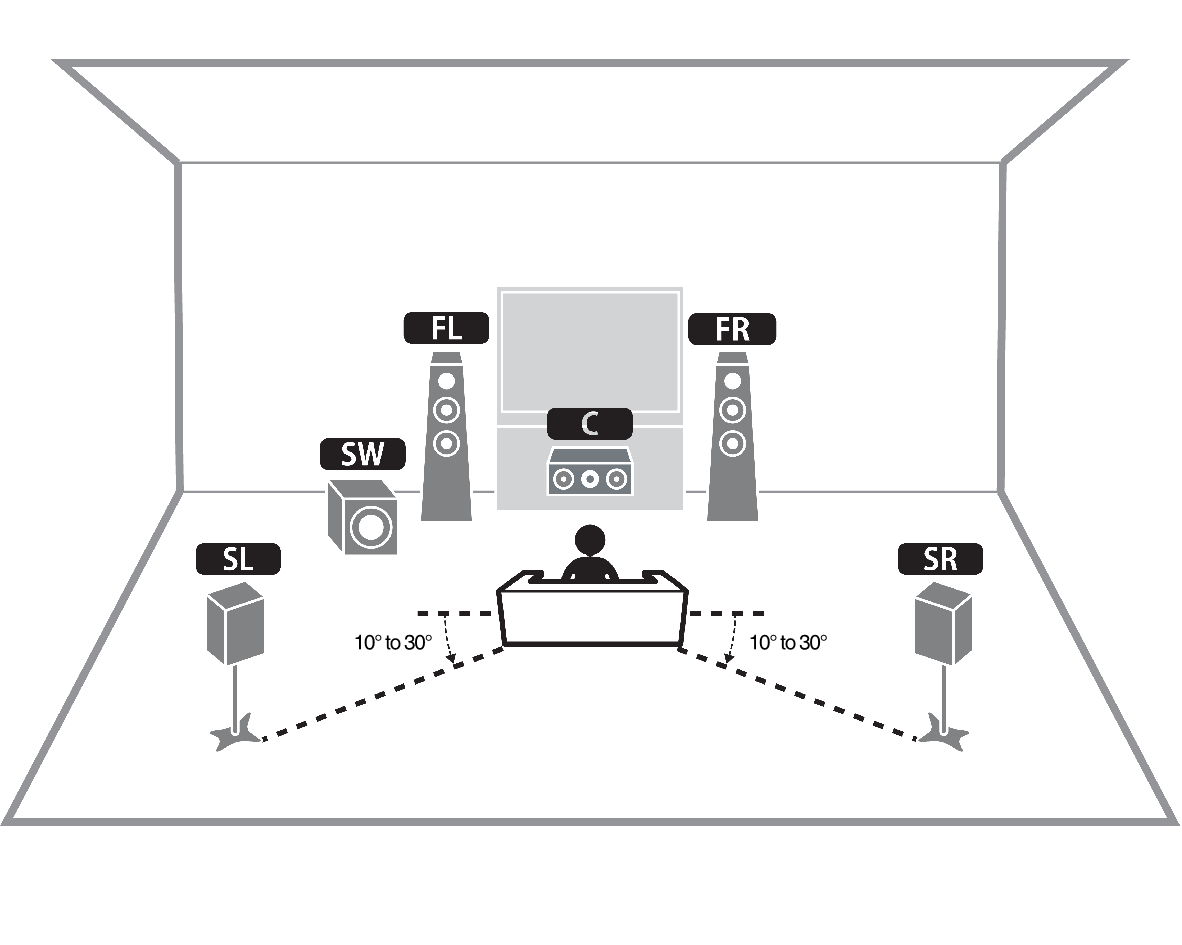
Audio frequency sounds are handled by subwoofers in the tracks that are broadcasted. The tremendous bass is created by this. The other sounds, on the contrary, are handled by the five speakers. 5.1 surround sound is currently the recommended arrangement in home theaters and commercial movie theaters.
For engaging and realistic genuine surround-sound effects, it is best suited to small and medium-sized spaces. 5.1 surround sound is the standard audio method for music and digital transmission.
Because 5.1 surround sound includes more audio speakers for output and more audio channels in sound recording, it gives consumers with more realistic sound and depth in their listening experience. 5.1 surround sound aids in correct localization and offers equability from all audio sources to a centered-positioned audience.
It is also regarded as the foundation of lossy sound formats and was a crucial component in the home theater movement. DTS, Dolby Digital, and other 5.1 surround sound systems are examples.
Advantages of 5.1 Surround Sound
- It has a simple and easy setup.
- It is more appropriate for smaller places.
- Has the basic channel setup
Disadvantages of 5.1 Surround Sound
- It has less bass audio that is uneven in different parts of the listening environment
- It has a lower total volume.
- The subwoofer may be placed anywhere.
5.2 Surround Sound
A home theater system with 2 subwoofers and 5 speakers is known as 5.2 surround sound. The bass sound is believed to be the biggest difference between 5.1 and 5.2. The second subwoofer in a 5.2 home entertainment system increases the audio quality of high pitched audio frequencies.
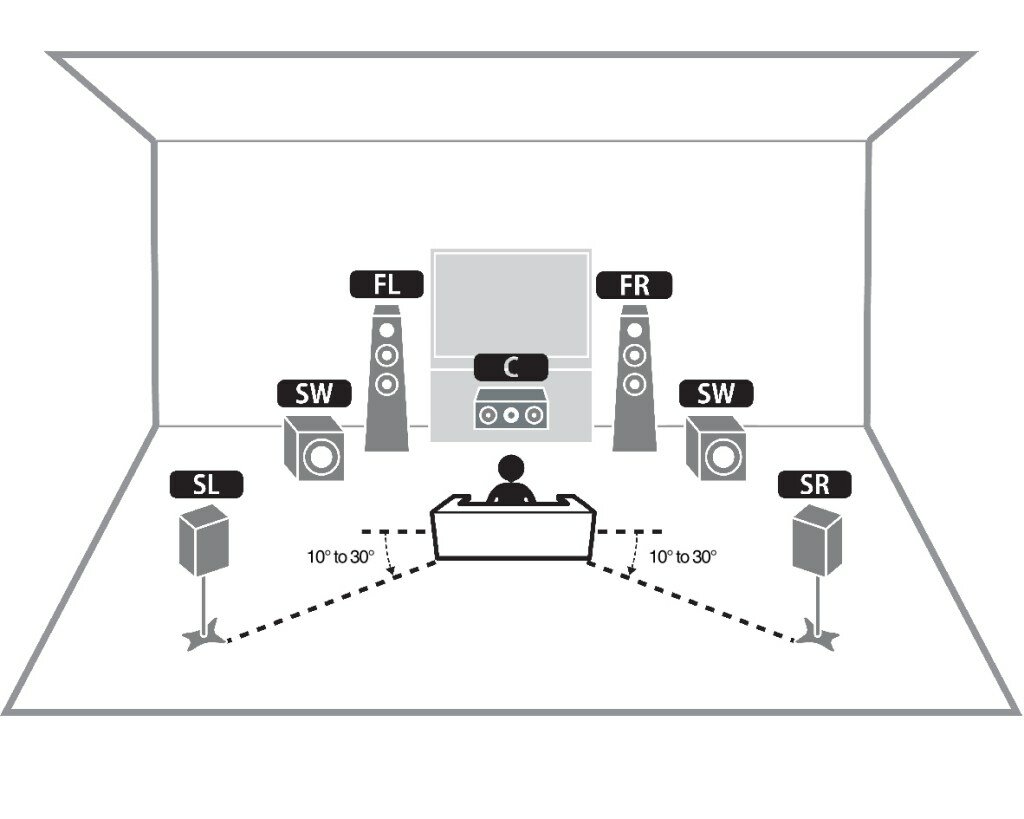
To be honest, this improvement might not be audible across all hearing environments. Since the sound quality of a little space will not be in a position to certainly impact the additional low-frequency audio, it is usually more visible if the home theater is set up in a larger room.
Advantages of 5.2 Surround Sound
- Low-frequency responses are smoother in a wider range of listening locations.
- It’s best suited to bigger rooms.
- It’s more difficult to pinpoint the location of the subwoofer.
Disadvantages of 5.2 Surround Sound
- It comes with other parts to put together, such as a subwoofer.
- It needs more area and is more difficult to put up.
Comparison of 5.1 and 5.2 Surround Sound
Following that, it’s a good idea to study about the similarities and differences between the 5.1 and 5.2 surround sound setups before deciding which surround sound setup is appropriate for your home entertainment system.

Similarities
Setup
Surround sound options include 5.1 and 5.2. In accordance with channel placements, the 5 audio sound systems must be positioned as follows:
The Center: The middle speakers must be positioned directly in front of the listener, beneath or on-top of the television screen.
Front right and left: Position the front left and right audio sound systems at a 30° angle from the listener’s position on each side of the midline.
Surround left and right: Position the two surround audio sound systems on the listener’s left and right positions, about at a 110° angle from the audience’s position.
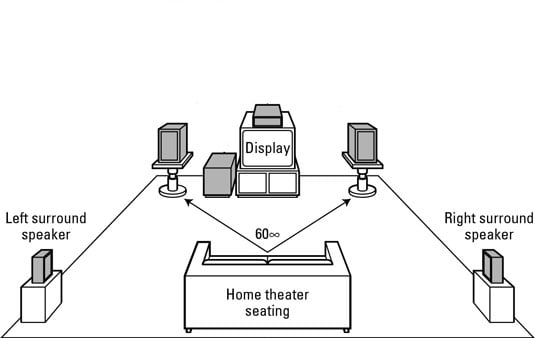
See our article on ideal speaker placements for more detail.
Supported Devices
Both 5.1 and 5.2 systems use the same formats for decoding and support the same devices. These gadgets include the following:
- HDTVs
- Video games
- DVDs
- Blu-ray discs
- Setup Process
Speaker terminations are similar in the 5.1 and 5.2 setup processes. The number of discrete audio channels, as well as the number of subwoofer outputs and power amplifiers, varies. Five speakers and one subwoofer are required for 5.1 surround sound system setup. To handle 5.1 soundtracks, you’ll need a surround sound receiver with at least six channels.
You’ll need five speakers for 5.2, but you’ll also need a surround sound receiver with at least seven channels. To power the two subwoofer speakers and drive the bass, a subwoofer with two outputs (ideally the bottom two) is required, which adds a layer of complexity to the setup. It also raises the price owing to the additional subwoofer required.
Format
The following formats are compatible with 5.1 and 5.2 surround sound systems:
- Dolby Digital Surround Sound
This is the initial distinct high-definition format, which is widely regarded as the gold standard in surround sound. In terms of clarity and realism, this format much beat Dolby Pro-Logic. It squeezes the entire full film audio tracks with specific surround sound data to fit on a CD. Surround sound speakers handle low-frequency sounds tracks, which have been made easy to integrate.
- DTS
It is Dolby Digital’s major competitor. It isn’t as well-known as Dolby Digital. Some claim it is more accurate than Dolby Digital because it utilizes reduced distortion.
- Dolby Pro Logic II
It utilizes the same four-channel matrixes as Pro Logic, but instead of decoding sound system records, it converts them to 5.1 surround sound.
- Neo: 6 DTS
Similar to Dolby Pro Logic II, up-mixing is used to create 5.1-channel surround sound from two different sources.
Differences
Subwoofers
The extra subwoofer is the main difference between 5.1 and 5.2. The placement of the subwoofers is a little more complicated. Only one subwoofer is used in a 5.1 configuration, whereas two are used in a 5.2 arrangement. The subwoofer crawl is required for appropriate location. This is more of a case of experimenting with different positions to see where the bass sounds are the clearest.
Sound Quality
A 5.1 system’s sound quality is suitable for normal surround sound, which is fantastic. However, with a 5.2 arrangement, the bass sound quality improves due to the additional subwoofer. Even yet, this isn’t a straightforward improvement. It is dependent on a variety of elements, the most important of which being the room’s acoustics.
In most listening rooms, there are a variety of objects, equipment, and surfaces. Because of the bouncing of audio signals caused by these surfaces and objects, sound waves from speakers do not flow smoothly.
There are locations with a lot of resonating sound waves and others with little or no movement. As a result, the bass is typically significantly stronger in certain portions of a room and light or non-existent in others.
The second subwoofer of a 5.2 surround sound system helps correct the peaks and troughs in the bass sound. The two subwoofers will provide bass sound from many directions, filling in sinking regions and reducing sound resonance across the space. As a consequence, two subwoofers provide more even and richer sound.
Format
The 5.2 format generally has more sound channels than the 5.1 format, which results in better audio quality. The number 5.1 will no longer be used in film announcements, but the number 5.2 will. Various Blu-Ray players and movies are starting to include Dolby Digital 5.2 surround sound, and some are even going with Dolby Digital Plus.
Dolby Digital 5.1 surround sound is based on the fact that it contains 5.1 speakers, giving you a total of 6 independent speaker channels to deal with. For conversation and sound effects, there is a typical center speaker channel, which is normally supported by at least two satellite speaker channels, one for the left side and one for the right.
The subwoofer speakers are on the third channel, while the center, left, and right speakers are on the fourth and fifth channels, respectively.
Receivers
Surround sound technology transforms the way people view movies and play video games. You may enjoy the full effect of surround sound with a genuine 5.1 or 5.2 receiver. The 5.2 surround sound format, which is identical to 5.1 surround sound, is frequently utilized in the film industry and for broadcast sound.
If you’re building a surround sound system for your home theater, you may go with either a 5.1 or 5.2 configurations. However, the great majority of consumers choose for a 5.1 setup since a 5.2 system is significantly more expensive than a 5.1 arrangement.
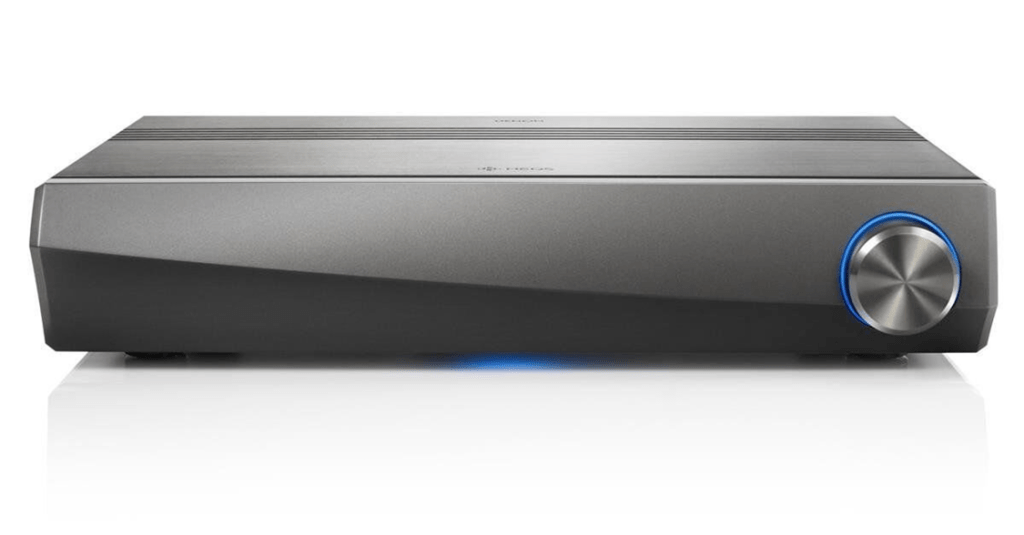
Benefits of Having Two Subwoofers
The two subwoofer layout of 5.2 surround sound systems is undeniably the major difference between 5.1 and 5.2 surround sound systems. So, let’s look at the advantages of having two subwoofers in your home theater setup.
More Listening Locations with the Best Sound Quality
The major benefit of having two subwoofers is that they can compensate for any room effects that a single subwoofer may produce. One of the most challenging components of home theater setup is subwoofer positioning.
This bass-heavy channel’s location might greatly affect your home cinema system. If properly positioned, the echo and thunderous noises produced may be an excellent complement to the relatively high subwoofer speakers.
According to most guidelines, the subwoofer should be positioned in a house corner, somewhere along a sidewall, or next to the front multichannel speakers. However, there’s no guarantee that vibration from items, walls, or concrete floors in the room will be avoided, regardless of whether any of those sites you pick.
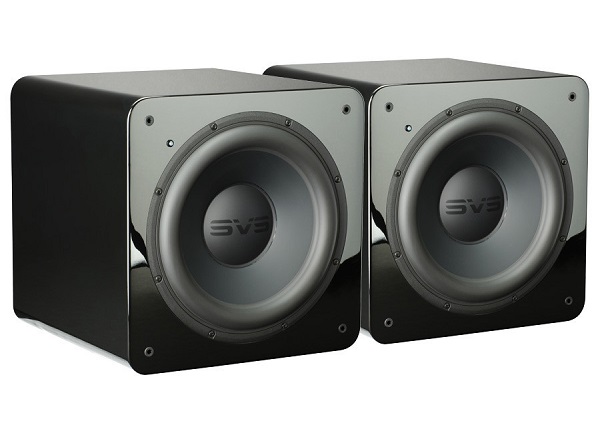
Bass sounds will always bounce back and forth between items on opposite sides of a room. When these reflected waveforms clash, stationary-wave or bass interference result. This means that certain parts of the room will have excessively loud thunderous effects, and some will be quiet and have less minimal impacts.
If you strategically add a second subwoofer to your home theater, the audio rhythms generated by the acoustic design will intersect and enhance acoustic wave’s frequency in the area. As a consequence, there are less spikes and subwoofer dips, as well as more pleasant areas when listeners may enjoy the best sound quality.
As a consequence, even if they are placed in different areas, more people may be able to hear the greatest audio effects of surround sound mixed with subwoofer system speakers.
Visual Aesthetics
Many music and home theater fans install their systems in mixed-use living rooms, where subwoofer performance must be balanced with décor and aesthetics. In such cases, a single bigger subwoofer, especially one with ported cabinets, may have too much visual effect or may not even fit in the designated regions.
Two smaller subwoofers, on the other hand, can provide comparable performance with less visual effect and can be placed in more positions across the room. Sealed cabinet subwoofers are a better alternative for discretion if space is an issue.
Localization is more difficult
The latest 5.1 and 5.2 surround sound systems have made it easier to pinpoint the sound source’s location.
You have additional options for speaker placement in your room with 5.1 surround sound. The center channel can be placed behind or above the listener. With the installation of a separate subwoofer, the rear channels may be placed behind the listener.
Alternatively, a separate subwoofer in the right or left channel can be added. All of these settings enhance the depth and clarity of your music while being simple to utilize.
The bass from subwoofers should not sound like it’s coming from a single direction for the optimum low-frequency impact. The ideal circumstance is for listeners to believe that the bass is emanating from each of the room’s surround speakers.
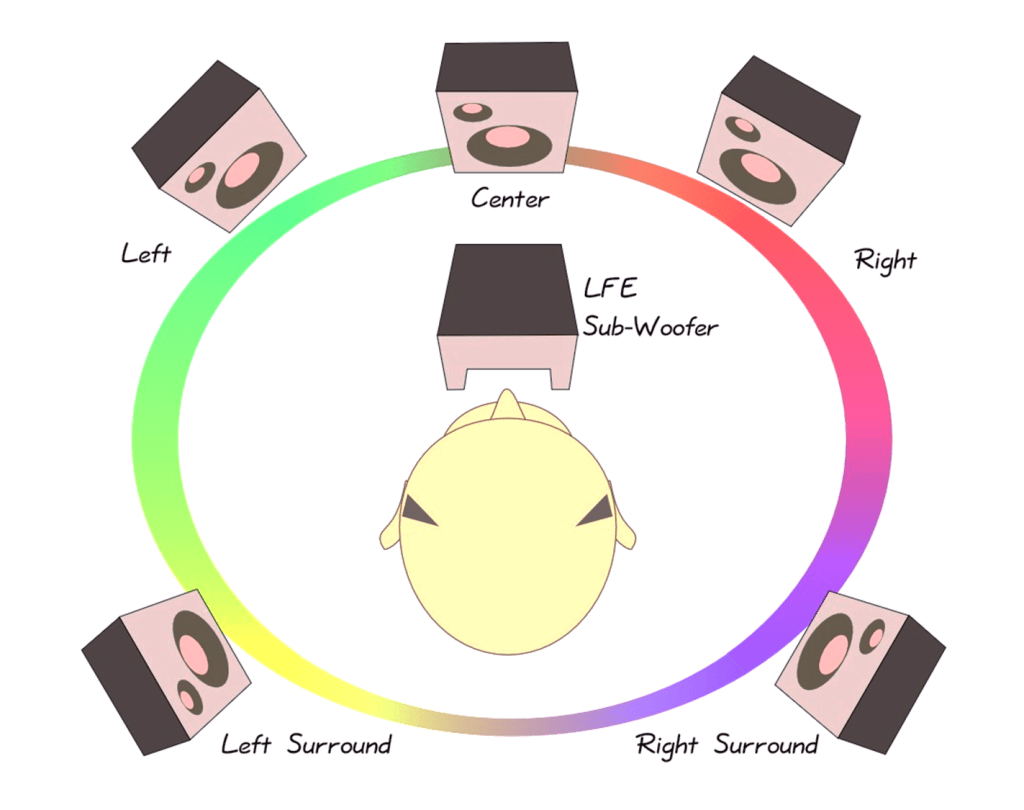
However, this is impossible to do with just one subwoofer. The placement of a single subwoofer in the playing environment is frequently obvious; in spite of a low speaker intersect frequency. The directional sound impact is significantly more noticeable if the subwoofer is not front and center.
For a quick and simple option, you may use two subwoofers in your setup. The immediate shift you’ll see as a result will amaze you. Many subwoofers are difficult to come by. They provide a comprehensive low-frequency impact with unique extent and depth by giving the sense of bass sounds originating from all directions.
Increased Sound Performance
Two subwoofers may boost the contrast ratio of the sound, eliminate distortions, and reduce signal distortion. This results in a bass that is clearer, more constant, and more precise. Simply said, two subwoofers will make your home theater audio sound considerably better and louder than just one.
Appealing Upgrades
Another benefit of using two subwoofers instead of one huge sub is the aesthetics. Yes, room aesthetics should be considered while putting up your home theatre system. After all, you’ll be entertaining in your sitting room, and even though it’s a separate space, you would like it to appear as beautiful as it sounds.
The presence of two subwoofers, although lesser ones, contributes to the room’s visual harmony. If they’re in the front row, it’s also easier to hide them or blend them into the rest of the room. A single huge surround sound system is tough to install and takes up a lot of space on the floor.
Conclusion
The performance of the elements in your audio system, as well as their position and space dynamics, all contribute to high-quality sound from your home theater. Surround sound systems with 5.1 and 5.2 channels are among the most popular on the market. This in-depth contrast between these two sets will help you decide which to choose.
The number of subwoofers used in each arrangement is the most significant with regard to the amount of components. In 5.1, there is just one sub, however in 5.2, there are two. There are some similarities between 5.1 and 5.2 surround sound, such as the usage of five speakers, as well as differences, such as the loudness of the bass sound created.
You may also be interested in:
- 5.1 vs 7.1 Surround Sound: Which Is Better?
- Surround Sound vs Stereo: What’s the Difference?
- Dolby Atmos For Headphones – Is It Worth It?
